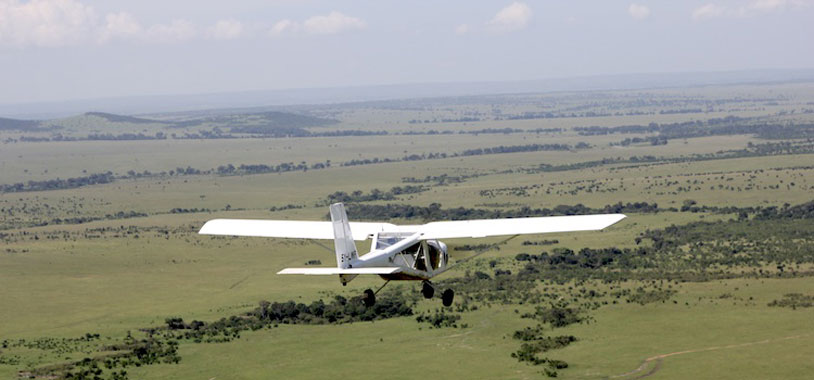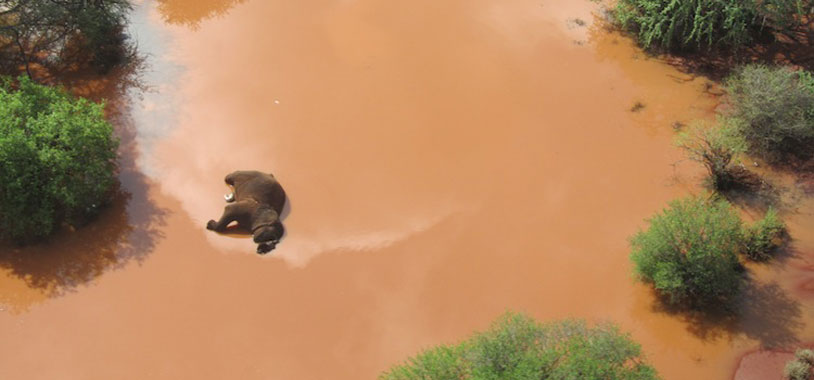On the morning of 21st November 2013, Richard Moller, Chief Conservation Officer at the Tsavo Trust was out carrying out his usual aerial recce with a Kenya Wildlife Service (KWS) ranger. While flying over Kishushe ranch near Tsavo National Park in Kenya, Richard and ranger Tsuma spotted an elephant carcass. It was a male, and fresh. He was lying in the middle of a waterhole, the tusks hacked off and missing.
During the short rains, elephants leave safe zones in search of better food resources, exposing them to poachers. The aerial recce team observed that there were several groups of scattered elephants in the Kishushe area, all grazing oblivious of the danger lurking in the poaching hotspot.
Tsavo is one of the last remaining strongholds for Great Tuskers in Africa, with at least 12 known there and many impressive younger bulls growing up. The Tsavo Conservation Area (TCA) is largely a roadless expanse and so aerial coverage is vital to monitor the movements of wildlife and the activities of poachers.
Save the Elephants funds regular aerial reconnaissance flights, carried out by the Tsavo Trust as to keep watch over these large tuskers and the other elephants in the two Tsavo parks. Moller, an honorary warden of Tsavo, logs an average of 30 hours of low-level reconnaisance in his Supercub aircraft 5Y ACE every month, uncovering poachers camps and hides and reporting them to the authorities.

As the aircraft circled the carcass a KWS ground team was called in. With such a fresh crime scene, the rangers were able to act fast and with confidence. Before long four men had been arrested, and both tusks recovered. In the open market, the tusks, which weighed 38kgs, would fetch up to 6,500 US dollars. The suspects were taken to Wundanyi and were arraigned in court on Monday, November 25th.

By September 2013, the Save the Elephants / Tsavo Trust Large Elephant Monitoring Programme had covered about 20,803 miles in 277.2 hours, leading to the recovery of 22 tusks – all are kept safe by KWS. Six tusks were recovered over the last week alone.

